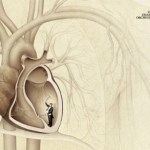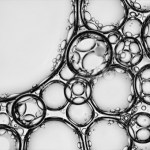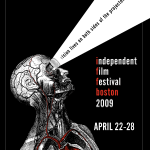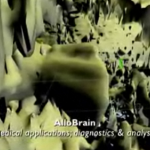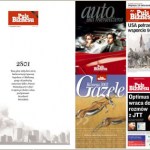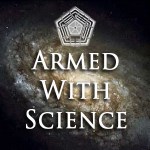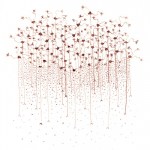Film, Video & Music
Remember the first time you learned sterile technique, or how to make a bacterial spreader, or how to blow up a distillation apparatus? Well, now you can relive the disorientation and anxiety nostalgic fuzzy feeling with benchfly.com, a site that offers video tutorials on various lab tasks, like making a bacterial spreader using a glass rod and a bunsen burner.
Overall, looks like an excellent resource for teachers. But wait - how'd this one slip in there?
Now that is a productive use of glass and alcohol!
Father Heart, 2006
Black Nickel on Rolled Steel; Glass Tank - 80cc with pedal
Josh Hadar
It's always puzzled me that bicycles don't take better advantage of the gleaming potential of curvacious, polished metal. Why are most bike frames so boring and triangular? Fortunately Josh Hadar has come to the rescue, with his beautiful curved steel custom bicycles. They're all lovely, but when he adds blown glass "hearts" to their steel ribs, his bikes seem positively. . . alien. Isn't it interesting that adding elements of human anatomy makes the bikes seem more unnatural? More bikes (and the…
Reader Mike sent me the link to this Coke commercial a while ago. I love the exasperated brain pulling himself around - he's like a mob boss driven crazy by his stupid henchmen. Their other ads aren't quite as funny, because they make you overthink the situation (if the eyeball can't drink Coke because it has no mouth, how is it talking?)
A beautiful anatomical ad campaign for the Zurich orchestra, via fubiz via Notcot.
Of particular interest I think is this comment on the thread at fubiz, from kmaz: "Music, and overall classical music, plays on emotion, not on the nervous system. instead of putting the music emotion above all, it takes it down heavily and awkwardly, to tie it with simple physic reactions." Really? "Plays on emotion, not on the nervous system"? Pardon me, but to a neurobiologist, that dichotomy is nonsensical. Our emotions and our nervous systems are inextricably entwined. Further, the complex physics and…
Maybe you can't leave town this weekend on vacation, but you can take an awesome behind-the-scenes video tour of UC Berkeley's Museum of Vertebrate Zoology, which is closed to the public, courtesy of Wired Science:
Officious handwritten tags tell the story of each and every animal's capture. In a screwtop container on the tray, a half-dozen chipmunk skulls rattle, picked clean of all their tissue by a beetle colony housed downstairs. . . You'll visit the bone room and the fur room, where the big mammals are kept. You'll see capybara furs, komodo dragon skins, and whale skulls.
Sometimes art doesn't need to be complicated. Shawn Knol's simple videos of oil in water capture fascinating patterns reminiscent of dividing cells, budding spores or lava lamps, depending on your mood. His newest, Psycho Bubble (above), was just released a few days ago.
"A lot of people are asking how I did this. It's pretty simple. I just put the camera on its lowest jpeg setting, placed the camera into continuous mode, and locked the shutter down with my wired remote. The oil is being dumped into a tall cylindrical glass, with about a cup of water in it. The whole thing is lit from…
My first thought on seeing the new Toyota Prius commercial was, "are those cells and membranes?!" No, they're people in costumes, but the resemblance of the Prius' cartoon world to a cell animation is pretty remarkable. The sun TOTALLY looks like it has transmembrane receptors on it.
My second thought was, wow, this is perhaps the first commercial I have seen to really make compelling use of high-definition TV. I kept getting closer and closer to my screen. So do yourself a favor, and click through to watch it in high-def if you have a decent connection. It's hypnotizing.
Well, not really. Artist Carel Brest van Kempen timelapsed stills of an acrylic painting to show his work process. It's remarkable how quickly the anole comes to life!
I especially enjoy watching the glazes go on and come off - each time he blots out part of the painting, I think, "oh NO!" But that's because I work in watercolor, which is pretty near irreversible. Acrylic is much more forgiving.
The Independent Film Festival Boston kicked off today, and this was their ad campaign. Nice use of anatomical imagery!
Light is an ephemeral but powerful artistic medium. This commercial for the Belgian energy company Electrabel captures the whimsical charm of fireflies on a warm summer night:
You can view a stunning higher-res version of this video here, with slightly different music. There is also a making-of video with scenes of the film shoot.
Thanks to Rhett for finding this one!
In her recent TED talk, JoAnne Kuchera-Morin described UCSB's AlloSphere, a new project that enables scientists to literally stand inside a three-story projection of their data:
The AlloSphere space consists of a 3-story cube that is treated with extensive sound absorption material making it one of the largest anechoic chambers in the world. Standing inside this chamber are two 5-meter-radius hemispheres constructed of perforated aluminum that are designed to be optically opaque and acoustically transparent. (source)
Scientists and artists can stand on a bridge through the center of this…
No, it's not how evolution really works, but it's awfully cool anyway.
The Experiment from Colin Trenter on Vimeo.
I love Photoshop, but am I the only one who thinks this resembles a cross between a Rorschach test and a SyFy Channel commercial?
What's that you say? You still haven't joined Twitter? You don't see the point of constant 140-character status updates? Well, that's suddenly okay! You can emulate the many developing third-world nations who leaped directly over landline telephones to cell networks, and bypass Twitter entirely for the next big thing: Flutter.
Now what we really need to do is figure out ways to harness Flutter to replace the mainstream media and transform science. Imagine lab goggles with your friends' "flaps" scrolling across them: you'll never need to leave the bench to "have a life!" w00t!
Via…
New anatomical DIY project: get a CT scan, remix it to music, and post it on the web! That's what Jaymis did:
Inside The Jaymis: Skeleton Animation - Wide Time from Jaymis on Vimeo.
I got an MRI recently, but they didn't give me the results on a CD, so I can't do this. Now I feel all left out. Nevertheless, it's kind of odd looking at someone else's innards on a Sunday morning over tea. . . is this DIY TMI?
Via Andrew Sullivan.
Jacek Utko argues that there is no convincing reason why newspapers should survive - but that good design might be able to transform them into something more successful. In addition to numerous awards, Utko's fearless use of white space, bold color, and dramatic imagery has won significant increases in readership (up to 100%) for several Eastern European newspapers.
A real newspaper redesign involves more than changing the layout. The layout is essential, but by no means the only element. First we define the goal, later the necessary content-changes, and only then do we get to design.…
My friend John Ohab is hosting a new DoD webcast called "Armed With Science." Sure, it has an over-the-top logo reminiscent of the Syfy Channel (I like to intone "ARMED WITH SCIENCE" with the same cadence as "PIGS IN SPACE!"), but the show turns out to be really well-done and interesting. Each episode is a half-hour interview with a researchers in a scientific field relevant to the military: sometimes that means SONAR or geopositioning, but they also take on general science topics like Brain Awareness Week at the National Museum of Health and Medicine. It's a nice mix of topics, and it's…
This is pretty darn good for Stanford students! ;)
Ready for the final?
Via Bora's blog, a delightfully cheesy1955 filmstrip about why science education is more important than anything else - even fishing. It starts out slow, but this Sputnik-era treasure turns into a veritable propagandafest about how science literacy is a civic duty. Plus, it raises vital questions like "Why do these kids have weird pseudo-Southern accents even though their parents don't?" and "How can science help Betty 'hook some guy'?"
Remember, women need to know as much about science as some men do! Are you going to be ready?
(Look how bored Betty looks by the end.)
Provenance:…
You've probably heard about the man with the eyeball camera. Here's the most detailed (and sometimes graphic) video I've yet seen about documentary filmmaker Rob Spence (aka Eyeborg), who is working on getting his prosthetic eye replaced with a wireless eye socket camera:
I first encountered Spence in this writeup at Wired last fall. According to the new video, they've hit a few snags since then, but for some reason Spence is all over the news right now. And it's a safe bet he'll continue to be, if he becomes the first cyborg reporter with a bionic eyecamera!
More: a briefer AP video on…
Thought Patterns #1
blood on watercolor paper
Laura Splan, 2003
The International Museum of Surgical Science in Chicago is calling for proposals for "Anatomy in the Gallery:"
[This program] showcases medically themed contemporary art within the unique context of the Museum's historical collections and exhibits. The program was begun in 1998 to help fulfill the Museum's mission of enriching its visitors' lives by enhancing their knowledge and understanding of surgery and related sciences.
Previous exhibitors include Laura Splan (above), Laura Kurtenbach, Geraldine Ondrizek, and Dominic Paul…
